I Can Spell Electroencephalogram (EEG)
Recently, my neurologist ordered an EEG test for my epilepsy. EEG stands for electroencephalogram. An EEG records the electrical activity in your brain and it helps doctors detect abnormal electrical activity of the brain. Most types of EEG tests are considered relatively painless. However, like any medical test, from scheduling to prepping for the test, an EEG can always include some inconveniences and annoyances. Anyone who has ever had to remove EEG glue from their hair, understands why I call an EEG “relatively” painless.
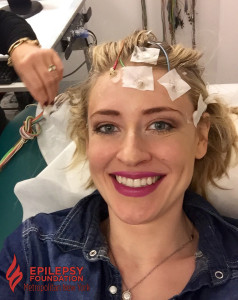
I had my first EEG test shortly after I was originally diagnosed with epilepsy when I was six years old. When my parents told me I had to undergo a new test related to my epilepsy, my first question was: “Are there any needles involved?” Luckily, my parents reassured me I would not be receiving a shot, getting an I.V. drip, or giving any blood. Plus, since my doctor prescribed me a sleep deprived EEG, the test prep required me to stay up late, preferably all night. Also, I got to miss a day of school, which was pretty cool! The next morning, my mother took me to my neurologist’s EEG lab. I was placed on a hospital bed and the technician glued electrodes to my head. After an hour of the technician asking me to breathe deeply and blink my eyes, they let me fall asleep. After I woke up, my electrodes were being removed from my head, and I returned home to go to bed. After several sleep deprived EEGs, I realized my mom also had to stay awake all night with me and miss work the next day. While I got to fall asleep for four hours during my EEG, my mom remained awake speaking with the technician or doctor. Now, as an adult, I understand how much an epilepsy diagnosis affects the entire family, from diagnosis to treatment.
In my twenties, I underwent a medication change because I began having a lot of seizures, again. My neurologist prescribed me several 72 hour ambulatory EEGs. For three days, I had a head full of glued-on electrodes. The electrodes were connected to wires, and the wires were connected to a small box recording the results. I could go anywhere, as long as I was still connected to my EEG box and electrodes. At work, I hid my electrode-covered head with a stylish beanie or scarf, allowing me to feel “normal.” Unfortunately, by the end of the first 48 hours, my head was itching like crazy. There was no beanie or scarf to alleviate my itchy head without removing the electrodes; but if these were to fall off, the EEG may have to be repeated! Finally, after the 72 hours, I would return to my neurologist’s office to have the electrodes removed.
After any EEG, the inevitable issue of how to remove EEG glue arises. During this period of my life, I was not connected with the Epilepsy Foundation of Metropolitan New York, so I did not know the Epilepsy Foundation’s magic trick for removing EEG glue:
· Add 5 to 7 crushed aspirin to half a cup of hot water to dissolve. Then, add 2 good size squirts of shampoo, 4 tablespoons witch hazel or seabreeze, and mix well together. Massage the mixture through wet hair and let it sit for about 15 to 20 minutes. Finally, begin to comb through your hair after an allotted time has passed. Rinse and use shampoo and conditioner as usual.
I have never had to undergo a video-telemetry EEG test, which requires a patient to spend days in a hospital wearing an ambulatory EEG box, while being recorded by a video camera. Additionally, during a video-telemetry EEG test, epilepsy medications may be reduced or withdrawn, to increase the chances that you will have a seizure that can be recorded. So, while there are rarely needles involved, I would not dare to categorize all EEGs as “painless.”
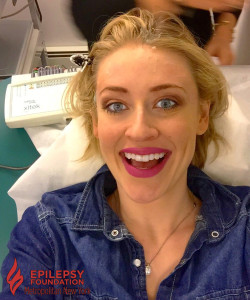 My recent standard EEG lasted for one hour and took place at my doctor’s office. It was the easiest EEG I had ever experienced. But, like epilepsy, even the types of EEG tests can vary. Like any medical procedure, it is important to stay informed and well prepared for an EEG test. The information an EEG test provides is essential for doctors treating epilepsy. Thankfully, this past EEG was totally painless because I finally knew how to remove EEG glue from my hair!
My recent standard EEG lasted for one hour and took place at my doctor’s office. It was the easiest EEG I had ever experienced. But, like epilepsy, even the types of EEG tests can vary. Like any medical procedure, it is important to stay informed and well prepared for an EEG test. The information an EEG test provides is essential for doctors treating epilepsy. Thankfully, this past EEG was totally painless because I finally knew how to remove EEG glue from my hair!
Infantile Spasms Awareness Week
Infantile Spasms (IS), also known as West Syndrome, is a rare form of age-specific epilepsy that usually presents itself in children within the first year of life. Early diagnosis and treatment of Infantile Spasms is of the utmost importance, and in many cases can ensure a more positive prognosis and a better quality of life, and significantly increases the chances of achieving reaching normal child development milestones.
Watch the videos below and check out our blog to hear a firsthand account of what it’s like to have a child with Infantile Spasms and to learn more about how Infantile Spasms (IS) are diagnosed, what signs to look for and what treatments are available.
In honor of Infantile Spasms Awareness Week, please share the videos below with friends and family in order to help us raise awareness about this rare form of epilepsy, and about the importance of early diagnosis and treatment.
SUDEP Awareness – A Family’s Story
My brother, Jimmy, was diagnosed with epilepsy at 6 months old. He was never able to get his seizures under control, and the longest he ever went seizure free was for 6 months after he had frontal lobe epilepsy surgery in 2011. However, 6 months after the surgery, his seizures returned and progressed to the point that his disease was just as bad as it was prior to the surgery. His neurologists were just getting him cleared for another brain surgery when he passed away from SUDEP or sudden unexpected death in epilepsy.
More information needs to be made available about SUDEP for people with epilepsy and their families, and throughout the medical community. The first time anyone in our family ever heard about SUDEP was the day after Jimmy died, not once had we heard of it before then. Since my brother’s death I have talked to others with epilepsy and none of them had heard of SUDEP prior to Jimmy’s passing. In order to make informed decisions about our health, we must have all the facts.

My family and our many wonderful friends just recently participated in the 4th Annual Into The Light Walk for Epilepsy in NYC, in honor of Jimmy, to celebrate his life, and to help improve the lives of others living with epilepsy in our community. We are making efforts to tackle SUDEP and Keeping The FAITH For JIMMY. Raising SUDEP Awareness helps spread much needed information, promotes the importance of comprehensive health education and can help prevent another family from being surprised and deeply affected by something unknown, like we were. Please join us on this mission.
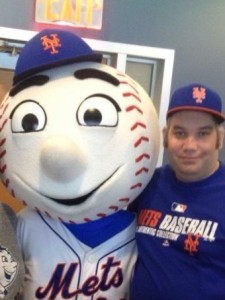 After my brother died, my family and I recalled that not once in his life did Jimmy ever question why he had epilepsy. He accepted the disease and it did not ever deter him from living his life. Many times this made us crazy because we were scared for his safety, but he wanted to live freely and enjoy his life. Epilepsy never defined Jimmy, he always lived life to the fullest, and for this we are happy and grateful. My brother was a diehard Mets fan and I think we are on this big run because of him. We love you forever Jimmy.
After my brother died, my family and I recalled that not once in his life did Jimmy ever question why he had epilepsy. He accepted the disease and it did not ever deter him from living his life. Many times this made us crazy because we were scared for his safety, but he wanted to live freely and enjoy his life. Epilepsy never defined Jimmy, he always lived life to the fullest, and for this we are happy and grateful. My brother was a diehard Mets fan and I think we are on this big run because of him. We love you forever Jimmy.
Please make sure you let your family and friends know that you love them, every chance you get.
Sincerely,
Kenny Hellmann
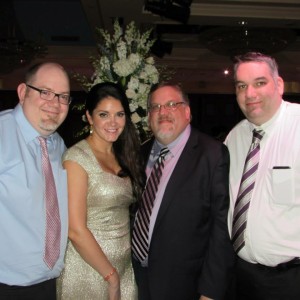
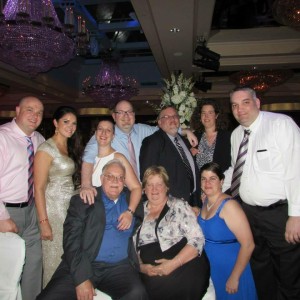
Help spread SUDEP Awareness! For more information, please visit:
My Epilepsy Story
I recall the day I had my first seizure very well. I was walking into the room where a school-wide mass was taking place when suddenly, as the music began, I became very anxious. Everything seemed to be in slow motion – even the music slowed down and I started to shake. I did everything I could to continue standing but the pain was too great. I slowly dropped to the floor. At one point, I thought I was dying (I thought this was the end). I woke up to the comforting smiles of my middle school’s vice-principal and nurse. My body was physically drained. They told me I had a seizure.
What was a seizure? For someone who had no bad medical history, why me? The shock of the diagnosis of Epilepsy was a bit overwhelming in and of itself, but then I had to learn all about it. All of it seemed so surreal. Over the next two years I went through countless seizure-drug combinations, some of which drastically changed my mood. At one point, brain surgery was discussed.
I was already struggling with anxiety but the diagnosis only made things worse. I constantly would wonder “When would my next seizure happen?” I was terrified. Seizures didn’t just affect me physically, they affected me emotionally and socially. During Middle School, I was nervous when I wasn’t around an adult. Also, I felt other students didn’t really understand me, some were even scared to have me around. There was always a sense of guilt and that I just caused ‘extra work’ for everyone; often I just wanted to disappear.

In the 9th grade I starting to become very socially withdrawn and didn’t feel accepted. I began to spend more time composing and engineering music, whether it be in the hospital, my room or a local studio. I caught a break and started working with major songwriters and recording artists, while continuing school. Throughout high school, I only had a few people I could confide in. There aren’t a lot of people who will understand those daily struggles. Most never saw the tears or the endless nights in the hospital.
When I graduated June 2014, my seizures were finally controlled by medication. I recently started college, focusing on graphic design, while continuing on music collaborations. I consider myself extremely blessed to have had great support from family, teachers, doctors and school nurses.
My dream is to create a career in the arts, one that will help inspire other struggling artists to persevere and push beyond the seemingly hopeless circumstances they sometimes face in life.
Growing-Up With Epilepsy and Learning to Speak Out at School and in the Workplace
Epilepsy is difficult to explain, describe and understand. People can only “see” epilepsy when someone is having a seizure. For many people with epilepsy, seizures are unpredictable and, sometimes, undetectable to others. In my case, most of my seizures have been tonic-clonic, or grand-mal, seizures. Tonic-clonic seizures are hard to miss. However, unless I’m having a violent seizure, no one would know I have epilepsy, until I open my mouth. I talk a lot about my epilepsy. Communicating with others about my epilepsy keeps me safe and helps me take control. As a person with epilepsy, I force myself to keep an open and honest dialogue with all of my medical professionals, my peers and my work colleagues.
I was five when first diagnosed with epilepsy after having absence, or petite-mal, seizures. At the time, I did not mind the epilepsy diagnosis because my seizures were not visible to me. Then, I learned I had to take monthly blood tests…with needles! I dreaded blood tests and I did not go softly or quietly into the pathology lab. It was stressful for me; every time I knew I was getting another blood test I would start crying and screaming. Finally, a lab technician took a moment to speak with me. I expressed to him my fear of needles. He offered to take my blood with a smaller needle he called a “butterfly,” and it would not hurt as much. I agreed to cooperate calmly. One conversation changed my entire attitude towards blood tests and my behavior at the lab. The recommended “butterfly” needle might have reduced the physical pain, but in hindsight, it was the technician who calmed me down by communicating with me and addressing my fears. At the age of six, I found power and control by openly communicating with all of my doctors and medical professionals.
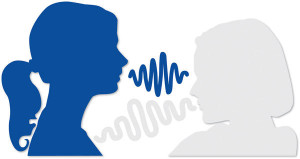 My first tonic-clonic, or grand-mal, seizure happened when I was in junior high school. Epilepsy is a difficult thing to openly discuss, especially during those awkward adolescent years. After many in-class seizures, I realized it was difficult and scary for my peers to witness one of my seizures. So, I took responsibility, and talked openly about my epilepsy. There were some students who used my epilepsy as a way to bully and tease me. A few kids called me “seizure girl.” I endured other unpleasant instances of bullying targeted at my epilepsy. Fortunately, I did not care about the opinion of those who bullied me. They did not want to communicate; they wanted to attack.
My first tonic-clonic, or grand-mal, seizure happened when I was in junior high school. Epilepsy is a difficult thing to openly discuss, especially during those awkward adolescent years. After many in-class seizures, I realized it was difficult and scary for my peers to witness one of my seizures. So, I took responsibility, and talked openly about my epilepsy. There were some students who used my epilepsy as a way to bully and tease me. A few kids called me “seizure girl.” I endured other unpleasant instances of bullying targeted at my epilepsy. Fortunately, I did not care about the opinion of those who bullied me. They did not want to communicate; they wanted to attack.
My seizures were controlled during high school. Although my epilepsy wasn’t visible, my parents and doctors strongly encouraged me to continue to disclose my condition. I often had to explain to friends I did not go to concerts because most concerts have strobe lights, a trigger for seizures. After I turned sixteen, I knew communicating my health issues was a legal and ethical responsibility as a licensed driver. I was becoming an adult and I needed to learn to talk about my epilepsy independently from my parents and pediatric doctors.
In my early twenties, I started having seizures, again. I was new to the New York City workforce and I knew little about how to talk about my disorder in the workplace. I never knew when to disclose my condition or who to disclose my condition to. As an adult, communicating about epilepsy, or any disability, in the workplace can be a grey area. I did not know if I should mention my epilepsy before or after I interviewed for a new job. Most companies do not encourage people to ask others their health issues, due to privacy laws. At twenty-seven, my epilepsy was uncontrollable and I needed to change my medications (AEDs). At the time, I was having seizures at work and felt devalued as an employee, even though I had a better attendance record than many of my colleagues. In fact, I had a superior criticize me via email for not drinking and socializing at an after-hours company event. I realized the people I was working with did not want to communicate openly and honestly about my epilepsy. Like the bullies in junior high, I stopped communicating with them. Instead, I communicated with my doctors and a lawyer. I filed for the Family Medical Leave Act. This provided me some short-term job protection. It also gave me a chance to stand up for myself against employers and colleagues who tried to exploit my condition as a weakness. My epilepsy is a neurological disorder, not a weakness.
I am still figuring out the best way to live and work openly as a person living with epilepsy. Luckily, I have connected with the Epilepsy Foundation of Metropolitan New York to learn more. The EFMNY provides tools to help facilitate communication and understanding about epilepsy. It provides New York City’s only specialized job development and vocational services program for people with epilepsy. Few people understand epilepsy and epilepsy’s far-reaching effects on a person’s life. So, as a person with epilepsy, I find it easier to tell others about my condition. People are sometimes afraid to ask questions about a disability or condition out of fear of being offensive or sounding stupid. So, I try to beat them to the punch and talk about my epilepsy first. It is important to help educate, explain and remove the stigma. I will never have complete control over my epilepsy, but I have complete control over my conversations about epilepsy.
-Alexandra DeBourcy, Mrs. Gotham City
Me and My Epilepsy – Mrs. Gotham City
My name is Alexandra DeBourcy and my epilepsy is a part of my life, my history and my future.
I was diagnosed with epilepsy at the age of five, when my parents noticed I was having “head tics.” Shortly after starting my epilepsy medication, I stopped experiencing myoclonic tics. As a 5 year-old, I did not understand the full extent of my diagnosis, but I recognized a change in my lifestyle. At that very young age, I had to swallow non-chewable prescription medication, undergo many boring diagnostic tests and take monthly blood tests. The blood tests were the worst. Even at five, I knew my epilepsy diagnosis was changing my life.
Despite years of living seizure-free, one day during class when I was in the 7th grade, I had my first ever grand-mal seizure. When I awoke, I was still in school, surrounded by working paramedics, as well as teachers and school administrators whose faces were filled with panic and fear. It took me a while to understand I had just had a seizure. At the time, I could only think about how my peers, who also witnessed my seizure, would judge me. Prior to returning to school, I called some of the students in class. It was easier to explain my epilepsy on a one-on-one basis. It helped. I don’t know if my phone calls helped any of my classmates, but it I do know it helped me. It gave me strength to face my schoolmates. I had more grand mal seizures in school during my adolescence, but I continued to open up and discuss my epilepsy with classmates and adults.
Luckily, I remained seizure free during high school and most of college, but my epilepsy was still a part of me. My parents and doctors reinforced the need for me to communicate my disorder to my friends, teachers and professors. No matter how long I went without a seizure, I had a different lifestyle than my peers. I was approaching the age where my actions, especially as a driver, had a greater effect on the lives of others. So, I continued to use communication, and levity, to introduce my epilepsy to other people.
After graduating from Syracuse University, I started having grand-mal seizures, again. This added additional considerations, as I was about to begin my career search. My epilepsy stabilized, and I moved to New York City. I loved New York City, and it had a public transportation system I could depend on. I was able to find work at an ad agency with an insurance plan. Since I had been denied a private insurance due to my pre-existing condition.
Unfortunately, I continued to experience seizures through out my twenties. I also experienced the Great Recession, the election of our first Black President, and falling in love with my husband. Eventually, my doctors and I decided to change medications. I had seizures at work. Some of my colleagues were empathetic; others were not. I sometimes felt stigmatized in my work environment. Due to privacy laws, it was hard for employers and colleagues to talk openly with me about my epilepsy.
Eventually, I left advertising. It was not the best career environment for my epilepsy. I decided to change careers and become a gemologist. My change in careers has allowed me to work in an environment more suitable for my epilepsy. I also work very happily with diamonds, gems and beautiful jewelry. It also has provided me with more time to devote to helping others with epilepsy. I now have the chance to represent the Epilepsy Foundation of Metropolitan New York as Mrs. Gotham City in the upcoming Mrs. New York America pageant.
I have had to accommodate my epilepsy throughout my entire life and, many times, I have resented my epilepsy. However, the happiest times in my life occurred when I worked with my epilepsy without shame. It is embarrassing to have a seizure in school or at work. It is awkward to tell peers about a personal neurological disorder. Furthermore, it is difficult to disguise EEG electrodes for three days straight. So, as an epileptic, I know I can empower myself by starting the conversation on my epilepsy. I want to continue and expand the conversation with others living and affected by epilepsy. It is the best way I know to keep myself safe and happy. We need to discuss new treatments, gather community support and take the stigma away from epilepsy.
